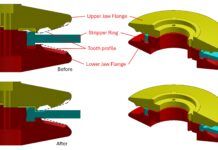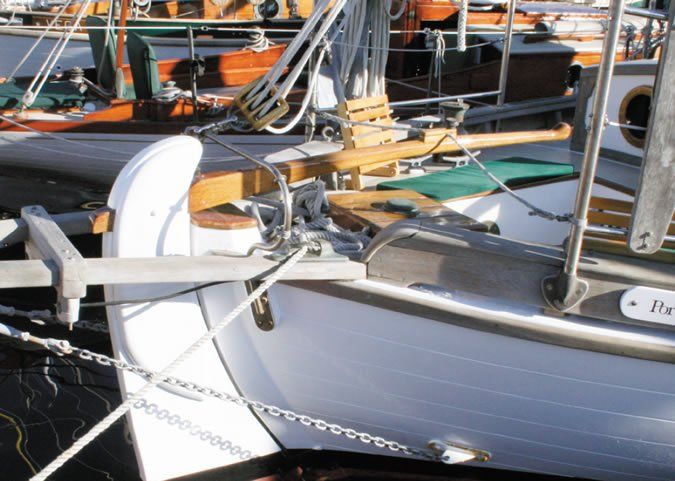
The tiller on Tosca was a rough-hewn piece of sawn ash-tough and springy. Where it fit in your hand, it was about as big around as a teacup. Tosca, our William Atkin ketch, was built in 1937, and I liked to believe that the tiller was the last piece of timber the builder had shaped, a piece of wood carefully selected from a tree he had known as a boy, endowed with hidden magic.
It hadnt always been varnished, for the grain where you gripped it was worn smooth by so many hands. One year, I stripped down all the old varnish. Looking closely, I could see what looked like finger-shaped depressions.
Years later, long after my wife and I had sold Tosca, the boat that had been our home for 10 years, I was on a trip to New York City, and in one of those flashes that exposes the quirks of memory, I thought of the tiller again. There in the soft paws of Patience, one of the two marble lions that flank the entrance to the New York Public Library (the other is Fortitude), I found traces of countless caresses, finger prints in stone, and realized that embarking upon a voyage-a proper voyage, one that is undertaken for all the right reasons-is like sculpting marble: at once a carving-out and a filling-in. And I suppose that is why Ill always favor a tiller over a wheel. Like the sculptors favorite chisel, it is a tool far better suited for the art of sail.
Toscas barn-door rudder had the hydrodynamic efficiency of a dumpster lid, but with a little effort, the sails could be trimmed so that the helm was sweetly balanced. In most conditions, when there was only a moderate sea for her to contend with, I could set my $1.69 auto-pilot-a single, two-foot length of bungee-cord with a bowline at one end, and figure-eight knots at intervals of four to six inches starting at the other end. Id loop one end around a stanchion, another around the tiller. The seaway, point-of-sail, or wind speed would determine which knot to button through the loop to apply the required tension.
A similar system worked with the Aries windvane. On the bottom of the tiller was a simple bronze chain hook. A small length of chain connected the port and starboard steering lines. To fine-tune the vanes corrective tug, I would move the chain one link to leeward or windward as needed. In the tradewind belt, we could sail for days without touching a link.
But these practical conveniences are peanuts compared to the real payoff of having a tiller. In the plainest technical terms, the tiller gives us near instantaneous corrective feedback, an opportunity to learn from our mistakes far quicker than any steering wheel can do. Both devices help us become better sailors, but the tiller does it faster. It is simply more honest about the conditions were facing-sometimes brutally so.
After thousands of corrections, countless pushes and pulls to adjust for subtle wind shifts or insistent nudges of steep following seas, intuition takes over. Where once each subtle course change involved a conscious effort, now the thought and the act of steering become one and the same.
There are few things as satisfying as looking back at your wake and noticing how the course youve drawn across the surface of the ocean appears nearly perfect, as if it, too, were drawn by natural forces independent of human volition. The carving out of the sea is the filling-in of the tillerman.






































